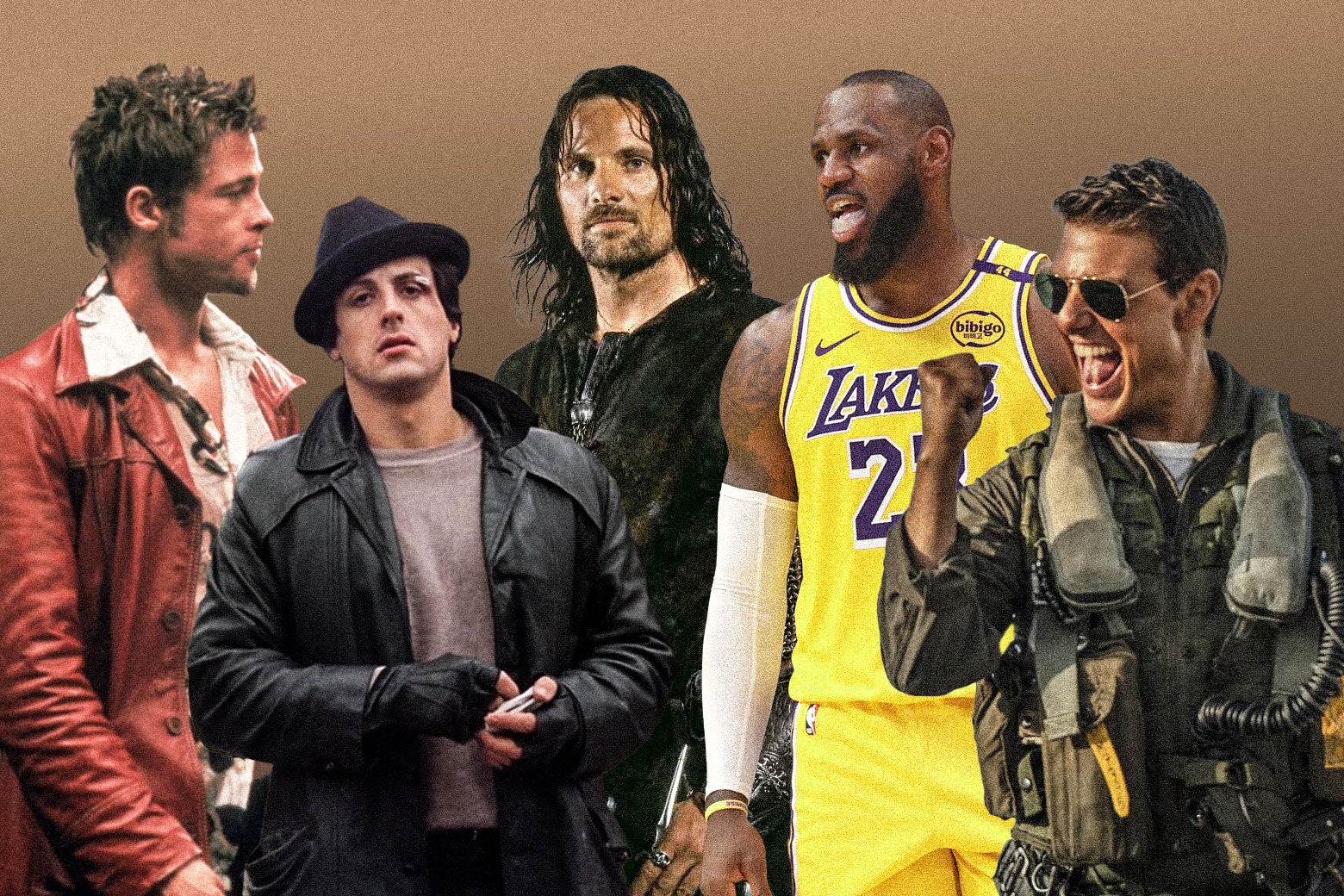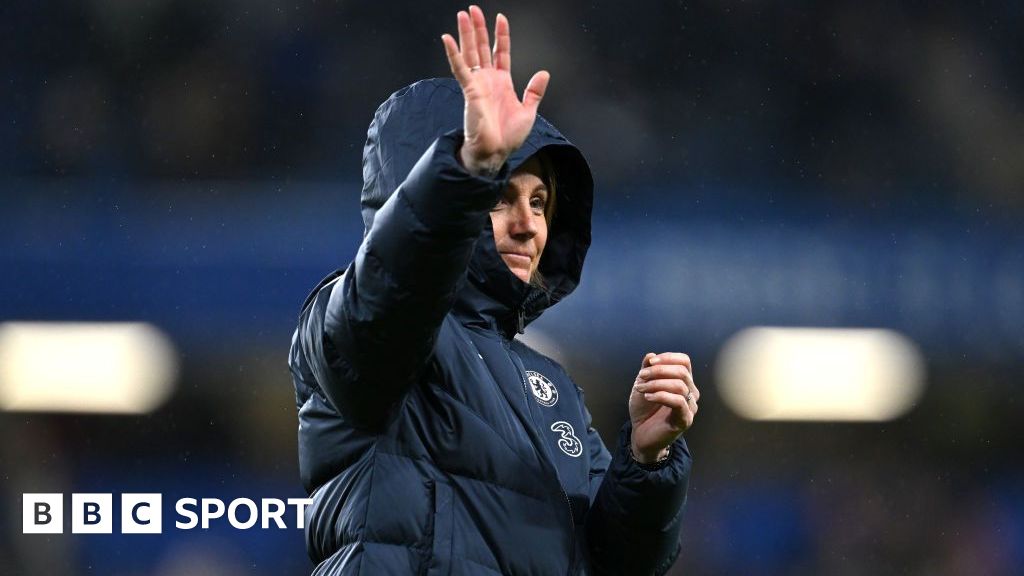Entertainment
How Hollywood Is Failing Young Men

Are young men … OK? That’s a question that seems to be on many a mind these days as conversations about gender, sexuality, and what it means to be a “man” reach a fever pitch in the media and beyond. A large part of that discourse revolves around an apparent dearth of relatable, inspiring, and adequate male role models (fictional and otherwise) for young men to aspire to. But what even is an adequate male role model? According to the National Research Group—an international strategy firm that conducts studies relating to the entertainment and technology industries—we’re facing a “masculinity crisis” in which “today’s boys and young men are being fed contradictory cultural signals about masculinity.” NRG raises and explores this cultural siren in a recent study titled “Hero Complex,” for which the organization polled 1,250 young men, ages 8 to 30, on where they look for male role models and how they feel about what they find there. One finding? Only 52 percent of the young men polled claimed to have real people in their lives to act as their role models, while 26 percent said they found role models in fictional characters, and 21 percent in public figures and celebrities. This is just one sign that media plays a massive role in the coming-of-age of young men—an insight that 84 percent of parents polled agreed with.
Slate spoke with Fergus Navaratnam-Blair, a research director at NRG, to learn about the most popular fictional and real-life male role models, how masculinity is perceived across the political divide, how depictions of masculinity have changed over the decades, and the growing role the internet plays in young men’s sense of self. This conversation has been edited and condensed for clarity.
Slate: It’s clear that investigating media’s presentation of masculinity is important, but you wouldn’t have necessarily known how important it is before doing the research. So what made you want to conduct this study?
Fergus Navaratnam-Blair: We at NRG work very closely with most of the big Hollywood studios and a lot of the big streaming companies, and they’re increasingly thinking about this question of: How do we create characters that resonate with male audiences, particularly young male audiences right now? Particularly in a time period when so many of these audiences are spending more and more of their time on online content platforms like YouTube and TikTok.
The other reason was the broader cultural and social backdrop we’re in right now. We’ve been seeing, increasingly both here in the U.K. and over in the U.S., discourse within the media around this notion of: “Are we in a crisis of masculinity? What does that mean in terms of its impact on boys and young men growing up in today’s environment?” We felt we have something of a responsibility to be grappling with this question of: “What’s our role in this conversation?”
There’s a lot of conversation about the dissolution of monoculture now. But some things are certainly still capturing most young men. The study includes a list of the top 20 fictional role models for men and women. The list for young men doesn’t include a single character that exists in a real world—it’s mostly superheroes and fantasy characters. Comparatively, women still cite the Disney princesses and the heroes, but their list also includes characters like Dr. Meredith Grey from Grey’s Anatomy in the top 10, and Elle Woods and Olivia Benson making the top 20. What does that difference say to you?
It does speak to a gap in the market there that does have some very real potential long-term effects. I think we’ve had a lot of conversations within society over the last decade or so around the responsibilities of media to provide aspirational characters for young girls. There’s still a lot more we need to do on that front, don’t get me wrong, but it is something that I think we’ve been grappling with more proactively, and I think you see that manifest in the variety of stories. I mean, even within the Disney princess stories, there are a lot of different types of characters represented there. Elsa’s story is very, very different from Tiana’s, for example. Whereas for young men, it is more centralized around some of those traditional archetypes. And I think it’s something that we are seeing young men starting to respond to. We’re seeing young men saying, “I would like to see more characters in fiction who have skills I feel I can relate to, who I could try to imitate more in my life.” And I think that the failure of Hollywood to provide that is one of the reasons why we are seeing more young men taking their cues on masculinity from online content creators.
The study contends with how masculinity in different movies is viewed, not only in a general sense, but also across the political divide. Unsurprisingly, there were outliers: Brokeback Mountain was viewed as having positive role models by liberals but not by conservatives, and vice versa with Fight Club and Uncut Gems on the other end of the spectrum. Then there are the titles that found great success by straddling both sides of the divide. What can you tell us about the titles that were able to reach mass appeal, resonating with young men across the board?
So, there was a mix. The concept of masculinity has always evolved over time in response to wider cultural trends and cultural concerns. But I think one thing that’s really interesting about this current moment in time is just how polarized the topic is, how much of a political battleground it’s become. We saw some titles that resonated really strongly with more liberal audiences, some titles that resonated more strongly with conservative audiences, and then some titles in the middle that had that kind of crossover appeal.
We took a list of around 50 different movies and TV shows that we felt grappled with masculinity in some way, and we asked people in our survey, “Do you feel like the main male characters in this title are positive role models?” And some examples of the ones that fell into that overlap were a couple of Marvel movies—things like Captain America, Thor, Spider-Man: No Way Home—a couple of military-themed movies, like Saving Private Ryan and Top Gun: Maverick, and sports movies, particularly Rocky and Creed.
What are the qualities in those movies that help them strongly resonate with most young men?
One thing we saw in our study was a real desire among young men for male characters in movies that have real, deep expertise and specialist knowledge, and I think you see that reflected in a lot of these titles. In a lot of cases, that manifests in what we would think of as very traditionally male professions—I think that’s why you see military and boxing titles here. But there are other ways that can manifest as well. I think the core element of it is the question of: Does this feel like something that I could push myself to get better at? Realistically, most people following sports stars like Messi are not going to be able to play football at that kind of level, but they can push themselves to be better at it. Versus, I think, the more fantastical or superhuman things.
You also see, across a lot of those titles, this idea of male friendship and camaraderie. I think we are moving away a little bit from a historic notion of masculinity as the lone hero fighting against all odds, towards this sense of men supporting other men, men supporting other characters in the narrative. Lord of the Rings: Fellowship of the Ring did very well—I think that’s a big part of the appeal of that title, it’s about all of these people from very diverse backgrounds coming together in service of a quest. Saving Private Ryan is about the unit, it’s very much about the mission that they’re going on together.
Another thing that came out of a lot of the interviews with creators in the industry that we did for this study was the importance of personal growth in a lot of these narratives. The idea that it’s not necessarily the really inspiring stories, where the hero starts out in a position of strength, that resonate with younger male audiences as positive role models, but the ones where you see them grow over the course of the narrative. And often that doesn’t necessarily have to end in victory, in a traditional sense. Rocky and Creed were two of the highest-scoring movies. I think a huge part of why is the fact that they don’t fall into the stereotypical sports movie narrative where it ends in the big victory. It ends with failure, but they learn through that experience what masculinity means, they learn how to pick themselves up afterwards. It’s about the emotional arc rather than the external victory.
The study claims that Hollywood needs “to create space for diverse models of aspirational masculinity” and warns the industry against focusing “too heavily on critiquing previous notions of masculinity instead of constructing healthier visions of the future.” Is this lack of diverse models due to some models of “aspirational” masculinity struggling to sell tickets or get high viewership? Or is Hollywood changing too slowly to appropriately cater to what young men want to see?
Broadly speaking, I think part of the story there is around the omnipresence of certain genres recently in Hollywood, and the flattening effect that has on some of these narratives. We have been in a period where, for the last decade or so, these big-budget superhero movies have been dominating the box office, crowding out a lot of the mid-budget films where we might see more space for those kinds of narratives of real, relatable personal growth.
Another part of the issue is who people are writing for. This was mentioned by some of the people that we interviewed in the study, but if you go back to the ’70s, ’80s, ’90s, and look at the types of stories that were being written about these male characters, a lot of them were written to have this kind of cross-generational and cross-demographic appeal. They were trying to tell these universal stories about the male experience that had broad applicability and would prompt conversations between people about these different challenges that you were talking about. Whereas now we’re in an era where a lot of content is very hypertargeted towards individual demographics of viewers, where people are engaging on streaming rather than linear TV. That means they can go and pick out for themselves content that’s been very specifically tailored to their interests.
Right! The study shows that if young men aren’t getting the representation they seek from Hollywood, they’re just going to go to YouTube. You have this list of Gen Alpha’s real-life role models compared to Gen Z and millennials. The YouTuber MrBeast is cited as the reigning real-world role model for Gen Alpha. Comparatively, Gen Z and millennials cite LeBron James first. MrBeast does come in for Gen Z and millennials, but not until 10th place, slotted right after Jesus Christ, who sneaks in the ninth spot. What is it about MrBeast that is capturing the generation? As an adult who reports on internet culture and celebrity culture, I know he’s been a fairly contentious figure for some time now.
We fielded this research a couple of months ago, before some of the more recent backlash against MrBeast, so it’s possible that he might have slipped down a little bit if we were to redo the study right now. But to the broader question of his relevance to that specific age group, I think in this online content world across platforms like YouTube and Twitch and TikTok and so on, we are seeing a new model of masculinity emerge. We are seeing creators who are both helping to shape but also responding to what they’re picking up from their very young audiences.
There’s a real focus on male camaraderie that MrBeast really plays into. He is not just doing his big stunts, but he’s doing them with a crew of friends who are almost exclusively male. So much of his content is dedicated to the banter and the back-and-forth between them. Also, I think his very flashy sort of philanthro-tainment approach resonates with them a lot. It’s partly because it’s what social media algorithms are designed to propel into our feeds, but I think those kinds of real attention-grabbing stunts—digging 100 wells in Africa, those sorts of things—resonate very much with that younger male audience.
I think we also see, more widely among these male creators targeting that younger demographic, a vision of masculinity that’s very unapologetic in terms of its sincerity and enthusiasm for specific topics. I think about things like the degree that so many of these creators have leaned into collecting Pokémon cards and that sort of thing. There’s no irony there. There’s a real sincere appreciation of these hobbies that they fall into, and you see that come through whether it’s nerdy hobbies, like trading-card-game collecting, or more traditionally masculine hobbies, like combat sports, for example.
One title that has come to mind throughout this discussion is Stranger Things. It has the male friendships, it has the dedication to and adeptness in a more nerdy topic. But I do think that the one thing that kills it in terms of applicability to younger generations is that it’s so expressly offline because it’s a period piece. There’s not a single element of it that would be relatable to my 12-year-old brother who loves anime and traditionally nerdy stuff, because that’s not what school or socializing is like for him.
I’ve seen a lot of discourse within the industry about this kind of issue of more and more of the best filmmakers and storytellers retreating into the past a little bit, and being scared in some ways to grapple with the present. There are just a lot of narrative challenges around how you tell stories in a world where people can contact people immediately, where people have smartphones, where people are on social media all the time. Social media is not visually a very interesting topic in many ways. How do you make that visually interesting? Because of that, I think you have seen either media that is set in the present but skirts around these issues in various ways, or media that is very explicitly set pre–social media, pre-smartphones, etc. And I think that it’s difficult to tell stories about some of these topics, but I think doing that is going to help with some of these challenges around creating characters that resonate with young men.
Does Hollywood have an answer to this?
I think that is something that we are going to see increasing discourse about within the entertainment industry: How do we make content that feels relevant to that age group? It is partly around collaborating with people from that online universe. I know Amazon is doing their game show with MrBeast. That’s had its fair share of legal problems that it’s run into, but theoretically those sorts of collaborations might be one way into it. I think the other part is looking at that kind of new model of masculinity that we talked about and trying to understand: How do we make characters that feel relevant to that, or that push that in different ways, or play with elements of that? I think we talked at the end of the paper about Glen Powell’s character in Twisters, for example. The film spends a lot of time with him and the rest of his storm-chaser crew; you see that kind of banter that they have. But you also see that very enthusiastic and unashamed pursuit of the thing that he’s really passionate about: meteorology. We are in this kind of era where we don’t have the traditional divisions between jocks and nerds that we once had. You can be a kind of rugged cowboy like that character, but you can also have a Ph.D. and this kind of really in-depth specialist knowledge.
Hollywood is always on a bit of a delay, partly because of the production cycle of movies and TV shows, partly because the industry is driven by people who are older than their viewers in many cases, so it’s always going to take time for this to filter up into the stories that we see. But I do think over the next couple of years, we’re going to see an increased focus on that question of playing around with masculinity in ways that feel relevant to the Gen Alpha audience who’ve grown up online, following all of these content creators.








